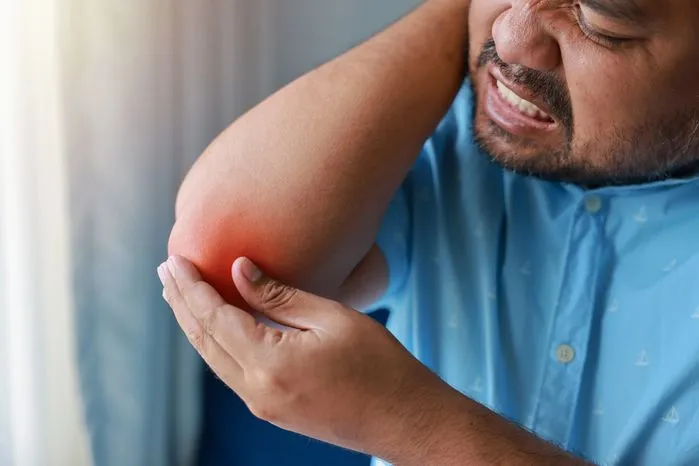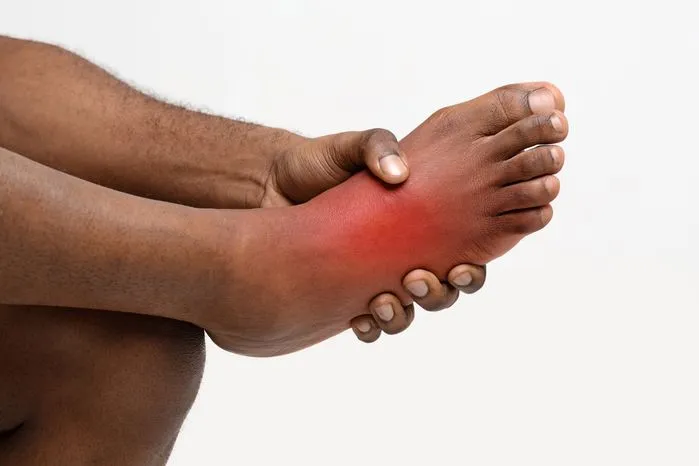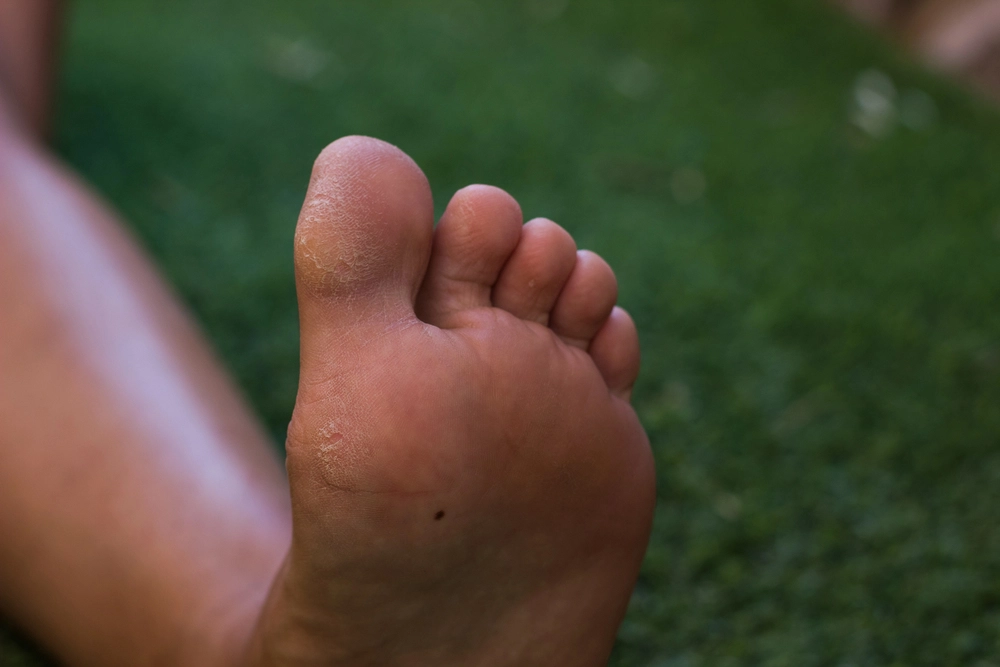
Releford Institute’s Opinion on The Safe Cutting Techniques and Treatment of First-Stage Ingrown Diabetic Toenails
Managing first-stage ingrown diabetic toenails requires careful attention to treatment and cutting techniques. In our experience, addressing the issue early makes a big difference. At Releford Institute, we focus on gentle care, especially for diabetic patients prone to infections. Trim them and avoid cutting into the corners to prevent irritation. Soaking the foot in warm water before trimming helps soften it. Regularly check your feet and seek professional help to avoid complications and keep your toes healthy.
Key Takeaways
- Diabetic ingrown toenails often start with symptoms such as discomfort, minor swelling, or redness often missed due to neuropathy.
- Treatments that prove effective range from home remedies, using shoes with ample space, to minor procedures carried out by podiatrists in severe cases.
- For safe trimming of toenails, diabetics should employ sharp clippers, cut their nails straight without curving, and keep nail length moderate.
- Regular foot checks, maintaining cleanliness of the foot, along blood sugar control help prevent complications and recurrent issues.
- Pressure on the toes can be minimized, thus reducing the risk of ingrown toenails, by steering clear of tight shoes, high heels, or snug socks.
Understanding First-Stage Ingrown Toenails
First-stage ingrown toenails may seem insignificant at first, but can quickly turn into serious health troubles, especially for people living with diabetes. Early signs might include a bit of discomfort, some redness, and minimal swelling around the nail. Recognizing these subtle signs at this early stage could be tricky though.
To avoid nail ingrowth, cut them straight across, steering clear of rounded edges. Keeping feet clean, and dry helps in preventing bacterial growth, thus reducing the chances of infection.
Neglecting these early signs could result in severe pain, pus, or red streaks extending from the toe, which are indicators of possible infection. For diabetic individuals, such infections could prove quite challenging, as battling infections is harder for them, turning minor toenail problems into serious complications.
The Link Between Diabetes and Ingrown Toenails
To understand the link between diabetes and ingrown toenails, consider these three key factors:
- Neuropathy: Nerve damage is a common symptom of this disease. This often leads to numbness in the feet. Therefore, discomfort from an ingrown toenail might not be felt until the situation worsens.
- Poor Circulation: Reduced blood flow to the feet is another effect of diabetes. This slows down the healing process and raises the risk of infection.
- Toenail Care: People with diabetes need to be particularly careful when trimming their toenails due to increased sensitivity.
Effective Treatment Options For Diabetic Ingrown Toenails
There are multiple effective treatments to address this issue. For example, there are home remedies that are low-cost alternatives. It includes using warm water with Epsom salt for a DIY foot soak.
A different approach involves wearing spacious, comfortable shoes and keeping feet clean and dry, which helps in warding off this condition. These steps act as preventive measures rather than cures.
More severe cases often require expert help. Podiatrists carry out minor procedures to extract the offending nail edge, delivering immediate relief. For stubborn cases, partial or full nail avulsion might be necessary.
Each treatment path depends on the severity of the ingrown toenail and the overall health of the patient, with diabetes management as a critical factor.
Safe Toenail Cutting Techniques For Diabetics
Diabetic patients must pay special attention to toenail trimming. Neglecting this task or executing it improperly often gives rise to complications like this condition. Cutting them excessively short or rounding off their corners can amplify the probability of nail-related problems.
Here are helpful steps for proper toenail cutting:
- Tool Selection: Choose good quality, sharp clippers. Cross out scissors or tools not designed explicitly for toenail cutting. Straight-edged clippers, often recommended for diabetic individuals, are optimal to prevent ingrown toenails.
- Technique for Cutting: Trim your nails straight across, maintain a modest length, and avoid cutting at the corners. This approach mitigates the risk of the nail edge growing into your skin.
- Frequency of Cutting: Trimming them every six to eight weeks, or when they grow long enough to cause discomfort in shoes, is a sensible practice.
Preventing Further Complications and Recurrence
To prevent further complications and recurrence of ingrown toenails, good toenail-cutting practices are necessary. However, self-care practices combined with footwear recommendations are just as vital.
Self-care practices include regular foot inspections for infection or injury signs, maintaining foot cleanliness, and moisturizing to avoid skin dryness. Control your blood sugar levels as well since high glucose hinders healing, thus increasing complications risk.
Footwear recommendations are central to preventing ingrown toenails from recurring. Shoes with enough room for toes diminish pressure on toenails, reducing the possibility of nail growth into the surrounding skin. Avoid wearing high heels and tight socks to prevent adding undue pressure.
Frequently Asked Questions
How do you fix diabetic toenails?
To fix diabetic toenails, you need to keep them clean, dry, and properly trimmed. Regular foot inspection for any cuts or infections is also important, as diabetics often have reduced sensation in their feet. In case of any injury or infection, seek immediate medical attention. Regular foot care with a podiatrist is also recommended for diabetics.
What do diabetic nails look like?
Diabetic nails often appear yellowish and may become thick and hard. They may also have ridges, be brittle, and grow slower than normal. Fungal infections, which are more common in diabetics, also cause these changes in the nails.
What does a bad diabetic toe look like?
A bad diabetic toe may have a variety of symptoms such as redness, swelling, pain, or warmth to the touch. It may also have ulcers, sores, or blisters that don't heal quickly. In severe cases, a bad diabetic toe may display signs of gangrene, such as black or blue skin.
Why can't diabetics cut their toenails?
Diabetics are advised not to cut their toenails because of the increased risk of causing a wound or infection. They often have reduced sensation in their feet, and a minor cut leads to a serious infection. Instead, a healthcare professional or a foot care specialist should trim their nails.
What are three things you should never do to the feet of someone with diabetes?
Three things you should never do to the feet of someone with diabetes include not ignoring any cuts or sores, not soaking the feet in hot water, and not using heating pads on the feet. All of these lead to injuries or worsening of existing conditions due to reduced sensation in the feet.
Do diabetics get free foot care?
Some diabetics may qualify for free foot care, depending on their insurance plan and the healthcare services in their country. However, it's not a universal benefit, and many diabetics still have to pay for their foot care.
Do diabetics feel tired after eating?
Some diabetics feel tired after eating due to high blood sugar levels. This is because the body struggles to move glucose from the blood into cells, leading to an energy drain and resulting in fatigue.
How to reverse diabetes?
Reversing diabetes requires lifestyle changes, such as maintaining a healthy diet, regular physical activity, and losing weight if overweight. Medication may also be necessary. However, the ability to reverse diabetes depends on how long the person has had the disease and its severity.
Should you cut a diabetic's toenails?
It is not advisable to cut a diabetic's toenails unless you are a healthcare professional or trained to do so. Improper trimming leads to injuries, which results in serious infections due to reduced healing capacity.
What is the first rule of diabetic foot care?
The first rule of diabetic foot care is to check your feet daily. This includes inspecting for any cuts, sores, swelling, or color changes. This is important because diabetics often have reduced sensation in their feet, making it harder to notice injuries.
What part of the foot hurts with diabetes?
The part of the foot that often hurts with diabetes varies from person to person, but the pain is commonly felt in the balls of the feet, the arch, or the toes. This is often due to peripheral neuropathy, a condition caused by diabetes that results in nerve damage in the feet.
Is a banana OK for diabetics?
A banana is okay for diabetics in moderation. While bananas are high in carbs, which raises blood sugar levels, they also contain fiber which helps manage blood sugar spikes. Portion control is key, and pairing a banana with a protein or healthy fat can also help maintain balanced blood sugar levels.


















